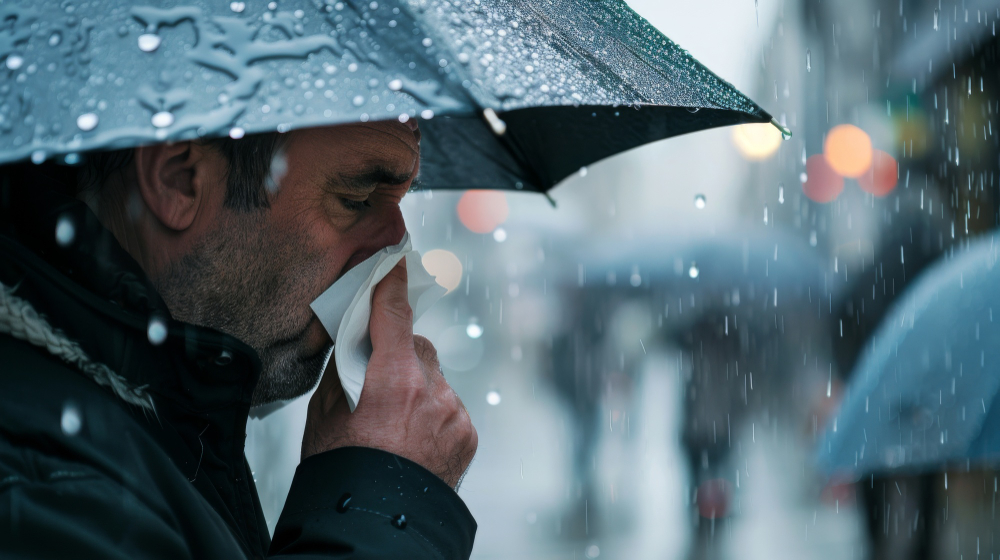Monsoon can be both refreshing and tricky. While the rains cool us down, they often lead to a rise in illnesses. During this season, various diseases become more common due to changes in our environment. Disease-carrying pests thrive, and water often gets contaminated. Knowing how to deal with these conditions becomes crucial. Staying informed about monsoon related illness can prevent health issues. Awareness and timely actions make a big difference in keeping these unwanted problems at bay. Preparation is key to maintaining good health and enjoying the picturesque monsoon safely.
1. Navigating The Spike in Monsoon Related Illnesses
Monsoon brings many changes to our surroundings. Water tends to accumulate, creating perfect breeding grounds for mosquitoes. Puddles of stagnant water become homes for mosquito larvae. Similarly, the water we drink can get contaminated, leading to unsafe consumption.
Some illnesses often associated with this season include:
- Dengue: This virus comes from mosquito bites. Symptoms can include high fever, headaches, and joint pain. To avoid it, keep mosquitoes out by using nets and repellents.
- Malaria: Like dengue, Anopheles mosquitoes spread malaria. This illness also causes fever and chills. Reducing mosquito bites significantly lowers the risk.
- Typhoid: This illness results from consuming infected food and water. Symptoms may include prolonged fever and abdominal pain. Drinking clean water and maintaining good hygiene can help prevent it.
Tackling these monsoon related illnesses involves raising awareness and staying alert. Teaching communities about disease prevention keeps us all safe. Simple strategies can curb the spread of infections. Using long sleeves, covering windows, and managing waste can decrease risk significantly. Keeping our climate and environment healthy is a team effort.
Community involvement in cleanliness initiatives can lower disease risks. Encouraging regular clean-up drives and educating neighbors about cleanliness habits strengthens our defense against these monsoon illness risk factors.
2. Recognizing Symptoms and Seeking Prompt Medical Advice
Understanding symptoms is crucial in identifying monsoon related illness early.
- Dengue typically starts with sudden fever, skin rash, and intense muscle pain.
- Malaria induces repeating fever, usually peaking every third day.
- Typhoid often presents with a rapid, lasting fever, stomach discomfort, and a dry cough.
Identifying common monsoon related illness symptoms ensures timely medical intervention. Don’t hesitate to seek medical help if you suspect an issue. Visiting a doctor early can significantly improve recovery chances. Regular check-ups safeguard high-risk patients, like young children and the elderly.
Red flag symptoms might indicate a more severe problem requiring quick medical action. Such signs could include persistent high fever, severe pain, confusion, or dehydration. Ignoring such symptoms could escalate illness. Being observant and proactive keeps the monsoon cheerful and not challenging.
3. Strategies for Prevention and Management of Monsoon Illnesses
Staying safe during monsoons involves understanding prevention of monsoon related diseases:
- Mosquito Defense: Use mosquito nets, spray repellents, and wear full-sleeves to avoid bites. Cover open containers and discard standing water around homes.
- Water Safety: Drink only boiled or filtered water. Avoid consuming food from open stalls. These steps are vital to reducing monsoon illness risk factors like typhoid and cholera.
Boosting immune boosters for monsoon illness helps maintain health. Include vitamin-rich fruits and vegetables in daily meals. A balanced diet increases immunity, lessening illness chances.
Here’s a quick doctor-approved checklist:
- Drink clean, filtered water
- Wear protective, full-length clothing
- Use insect repellents
- Ensure good food hygiene
- Maintain a clean living environment
Following these tips shields us from the seasonal health threats. Awareness paired with correct protection offers the best path to enjoying monsoons minus the health worries.
4. Debunking Myths and Embracing Health Responsibility
Misconceptions about treatment for monsoon related illness often persist. One myth is that mosquitoes only bite at night. They can bite anytime, especially in the early morning and late afternoon. Staying vigilant around these hours reduces bite risk.
Health isn’t just a personal duty; it’s communal. Promoting a safe, clean community environment aids in illness prevention. Sharing knowledge and collaborating in efforts keeps everyone protected.
Monsoon doesn’t solely stand for illness; with awareness and community cooperation, it’s a time to enjoy without fears. Remember, health is a shared journey.

